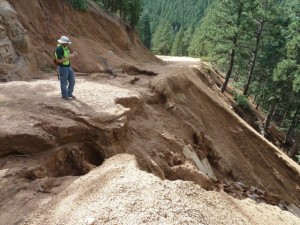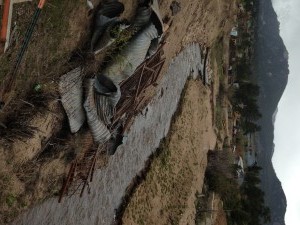By: Ameen Hosain In spite of recent events concerning numerous wildfires blazing in the forests of Colorado, it is important to address the effects that these wildfires can have on Trout and the environments they exist in.
According to Colorado Parks and Wildlife, "The biggest negative impact in burn zones is to fish." With wildfires comes an increased amount of sediment that runs through river systems. This increased sediment can clog the gills of trout, as well as suffocate many of the organisms living on the bottom of a river, both of which can severely affect any wildlife populations that exist in an area.
 Trout populations can be negatively affected by this excessive sediment, and it can take years for these populations to recover. According to CPW, "The South Platte River in and downstream of the Hayman burn area has only recently begun to return to the quality fishery that it was prior to the fire." The Hayman fire occurred in 2002.
Trout populations can be negatively affected by this excessive sediment, and it can take years for these populations to recover. According to CPW, "The South Platte River in and downstream of the Hayman burn area has only recently begun to return to the quality fishery that it was prior to the fire." The Hayman fire occurred in 2002.
For rivers effected by fires, things can be done to counter the negative effects on fish populations, and CPW has been doing these things for many years, working to ensure that burned environments recover as quickly as possible. Monitoring fish populations, restoring stream banks and fish habitat, and restocking fish when necessary are only a few of the actions taken towards aiding the recovery of streams.
Another notable affect of wildfires is the increase in the amount of runoff water that reaches streams and lakes. Fires can rid huge areas of the trees and plants that absorb much of the runoff from mountains, and thus largely increasing the probability of flooding.
Floods can be detrimental to fish populations and stream ecosystems, as they can be very powerful, with the ability to flush entire populations out of a stream and severely erode entire stream banks.
A well known example of this kind of occurrence is the flooding of fountain creek in Colorado Springs as a direct result of the Waldo Canyon fire. This flood destroyed many roads and homes in the Manitou Springs and Colorado Springs area, as well as eliminated the population of wild brown trout that once existed in the creek.
Alongside the increased threat of flooding, wildfires are also able to severely reduce the biodiversity in the areas they burn. Frequent fires can eradicate many native plant species, and encourage the growth of fire resistant plants, as well as encourage the growth of invasive plant species.

Often times these invasive species are much more flammable than the native species they replace, thus often creating a perpetual cycle where there is increased fire danger in areas where there have already been fires in the past. The ash produced can also destroy available plant nutrients, greatly effecting what kinds of plants can grow in burn areas
It is important to realize that the long term effects of wildfires can be beneficial to environments, and most negatives are only present for relatively short amount of time. According to CPW, benefits of wildfire include "[the] burned trees [allowing] sunlight to penetrate to the forest floor, which allows the growth of ferns and grasses that wildlife species rely on for food," as well as the "young plants that appear after fire [being] nutritionally superior to older, decadent plants."
Wildfires can prove to have huge affects on the fragile environments that exist within Colorado, and it is important to realize the negative and positive effects that come with these occurrences. It is important for any person who uses wildlife areas to be mindful of fire regulations and dangers, in order to prevent the negative consequences that can spring from the burning of wildfires.


